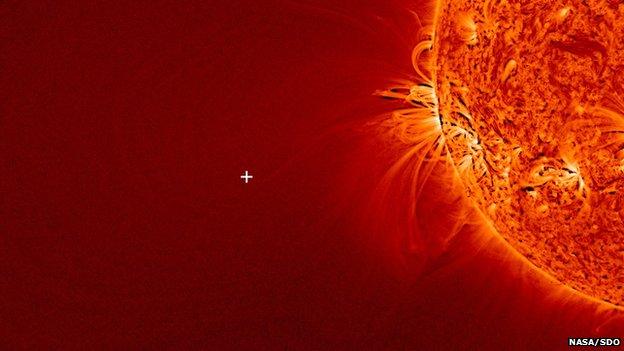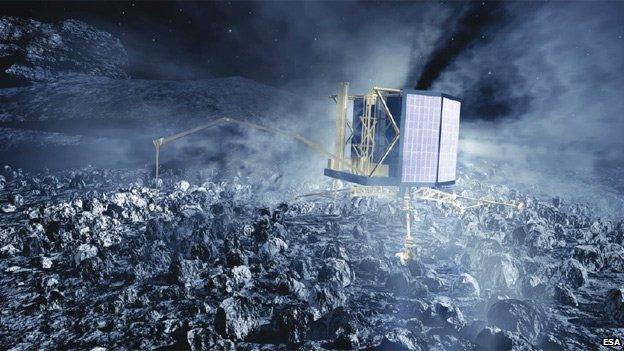Hope still for 'dead' Comet Ison
- Published
Astrophysicist Karl Battams: "This comet has confused and amazed us right from the word go..."
Comet Ison, or some part of it, may have survived its encounter with the Sun, say scientists.
The giant ball of ice and dust was initially declared dead when it failed to re-emerge from behind the star with the expected brightness.
All that could be seen was a dull smudge in space telescope images - its nucleus and tail assumed destroyed.
But recent pictures have indicated a brightening of what may be a small fragment of the comet.
Astronomers admit to being surprised and delighted, but now caution that anything could happen in the coming hours and days.
This remnant of Ison could continue to brighten, or it could simply fizzle out altogether.
"We've been following this comet for a year now and all the way it has been surprising us and confusing us," said astrophysicist Karl Battams, who operates the US space agency-funded Sungrazing Comets Project, external.
"It's just typical that right at the end, when we said, 'yes, it has faded out, it's died, we've lost it in the Sun', that a couple of hours later it should pop right back up again," he told BBC News.
The European Space Agency (Esa), too, which had been among the first organisations to call the death of Ison, has had to re-assess the situation. A small part of the nucleus may be intact, its experts say.

There were early doubts when nothing was seen in pictures where Ison should have been (cross)
How much of the once 2km-wide hunk of dirty ice could have survived is impossible to say.
Passing just 1.2 million km above the surface of the Sun would have severely disrupted Ison. Its ices would have vaporized rapidly in temperatures over 2,000C. And the immense gravity of the star would also have pulled and squeezed on the object as it tumbled end over end.
Karl Battams said: "We would like people to give us a couple of days, just to look at more images as they come from the spacecraft, and that will allow us to assess the brightness of the object that we're seeing now, and how that brightness changes.
"That will give us an idea of maybe what the object is composed of and what it might do in the coming days and weeks."
Whatever happens next, comets are going to be a big feature in the news over the next year.
In 11 months' time, Comet Siding Spring will breeze past Mars at a distance of little more than 100,000km. And then in November 2014, Esa's Rosetta mission will attempt to place a probe on the nucleus of Comet 67P/Churyumov-Gerasimenko.

An artist's impression of Esa's attempt next year to land on Comet 67P with its Philae probe
- Published23 November 2013
- Published19 November 2013
- Published18 September 2013
- Published6 February 2013
- Published30 December 2012